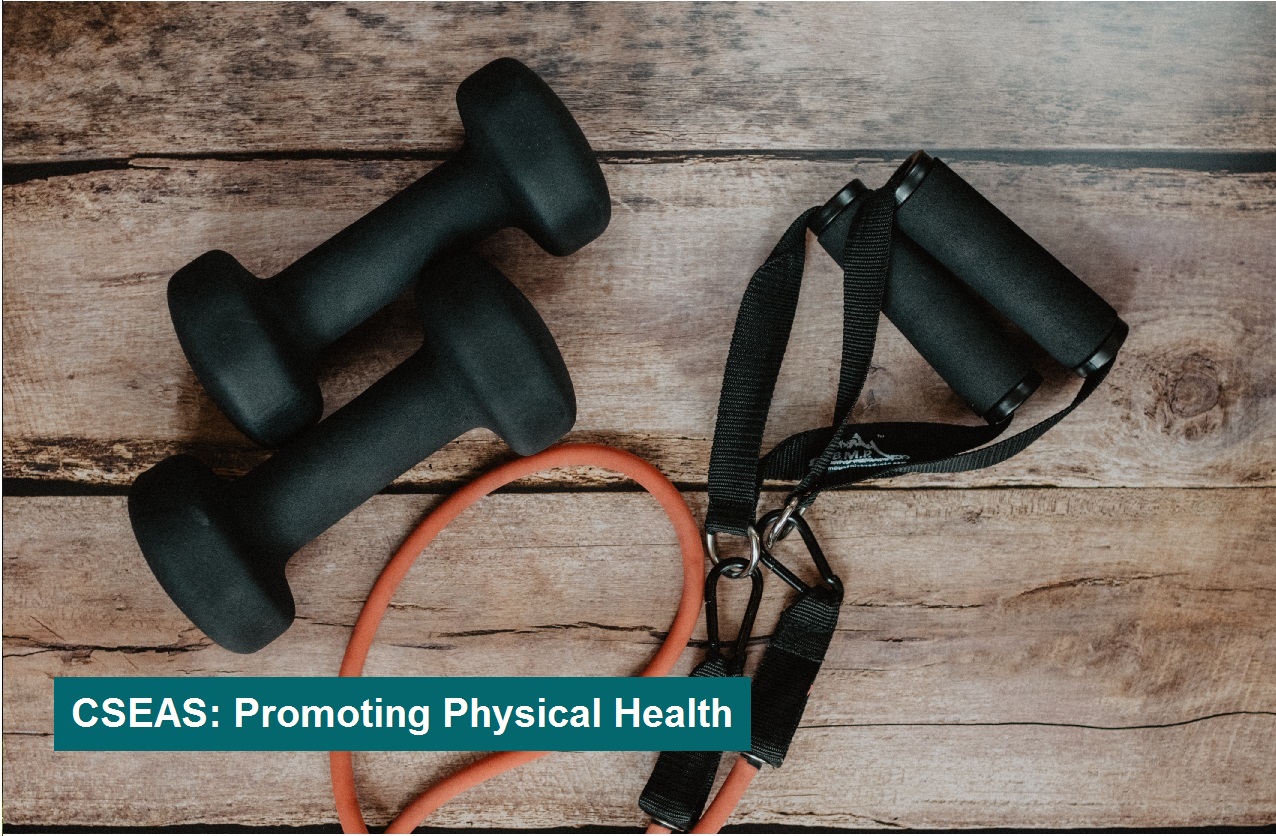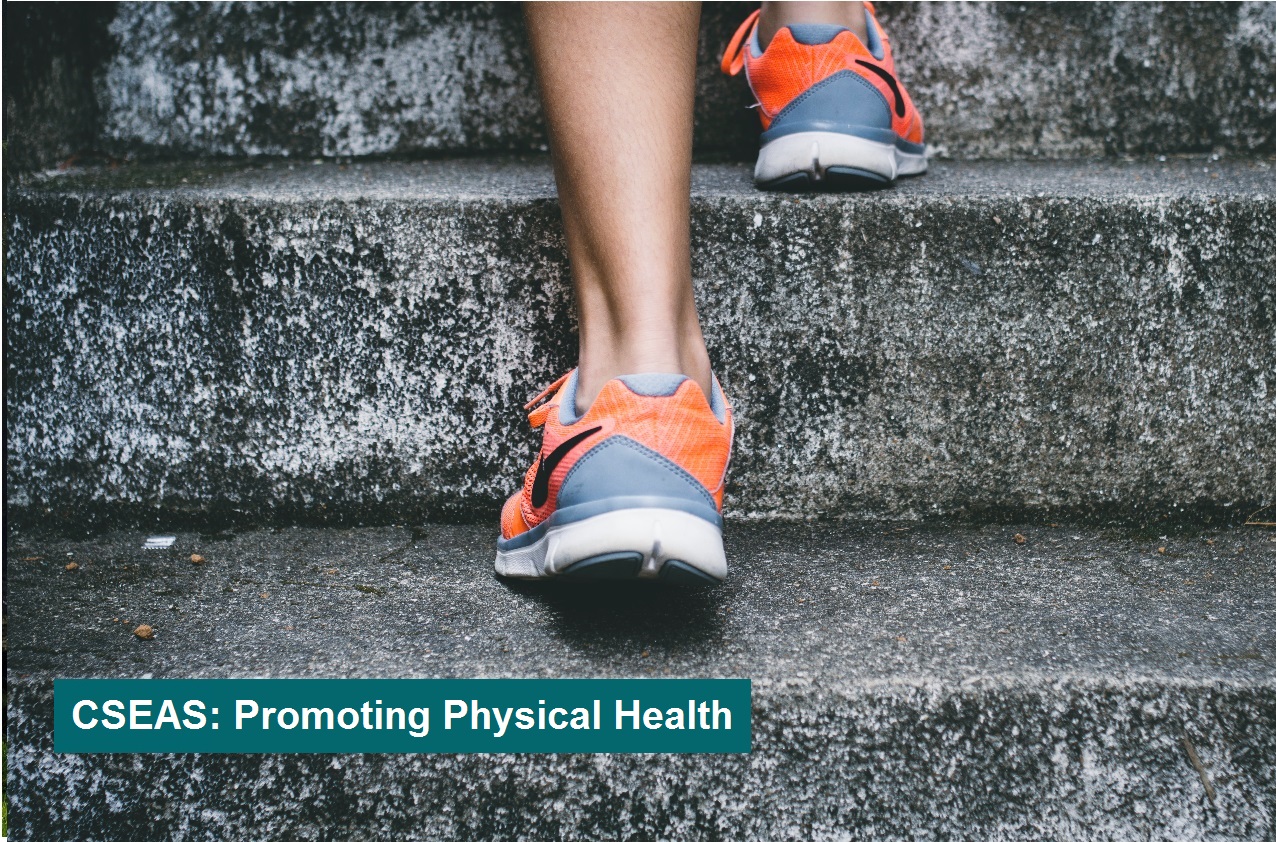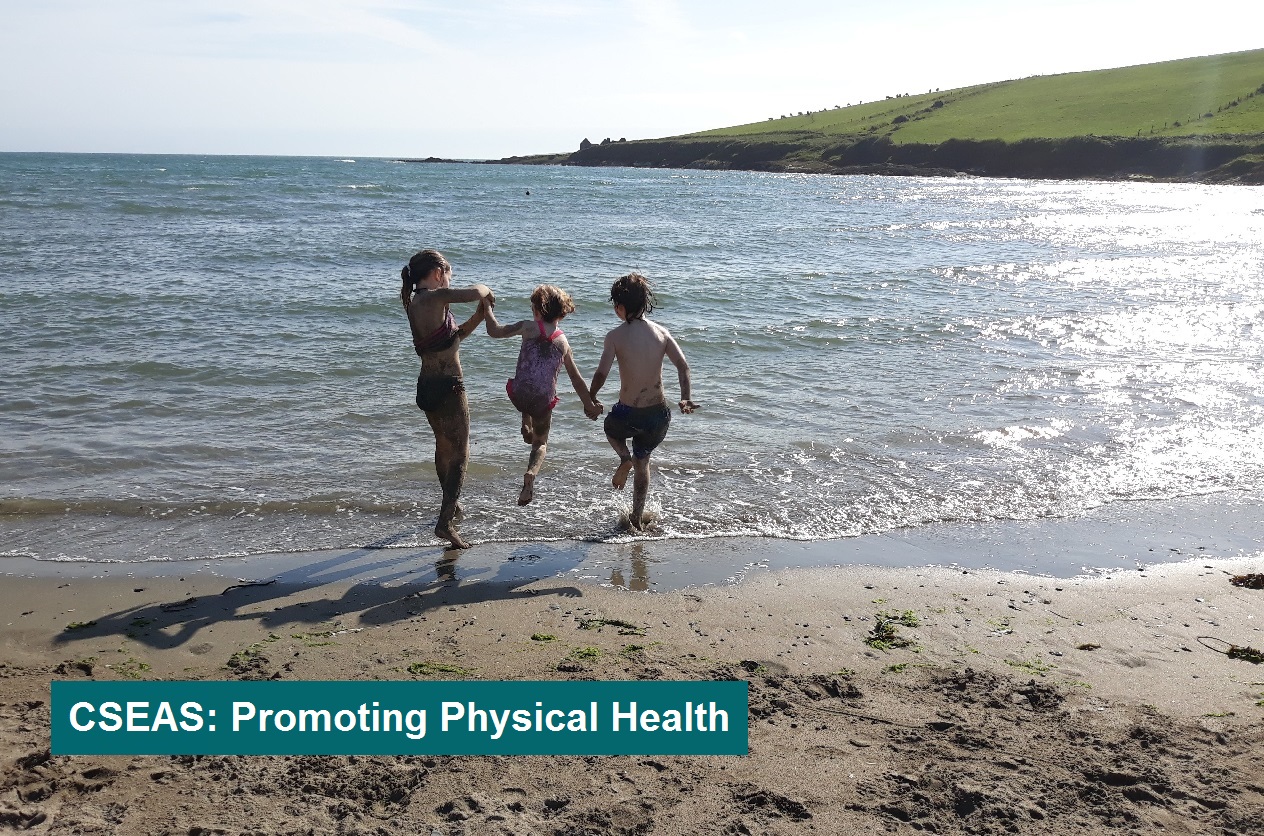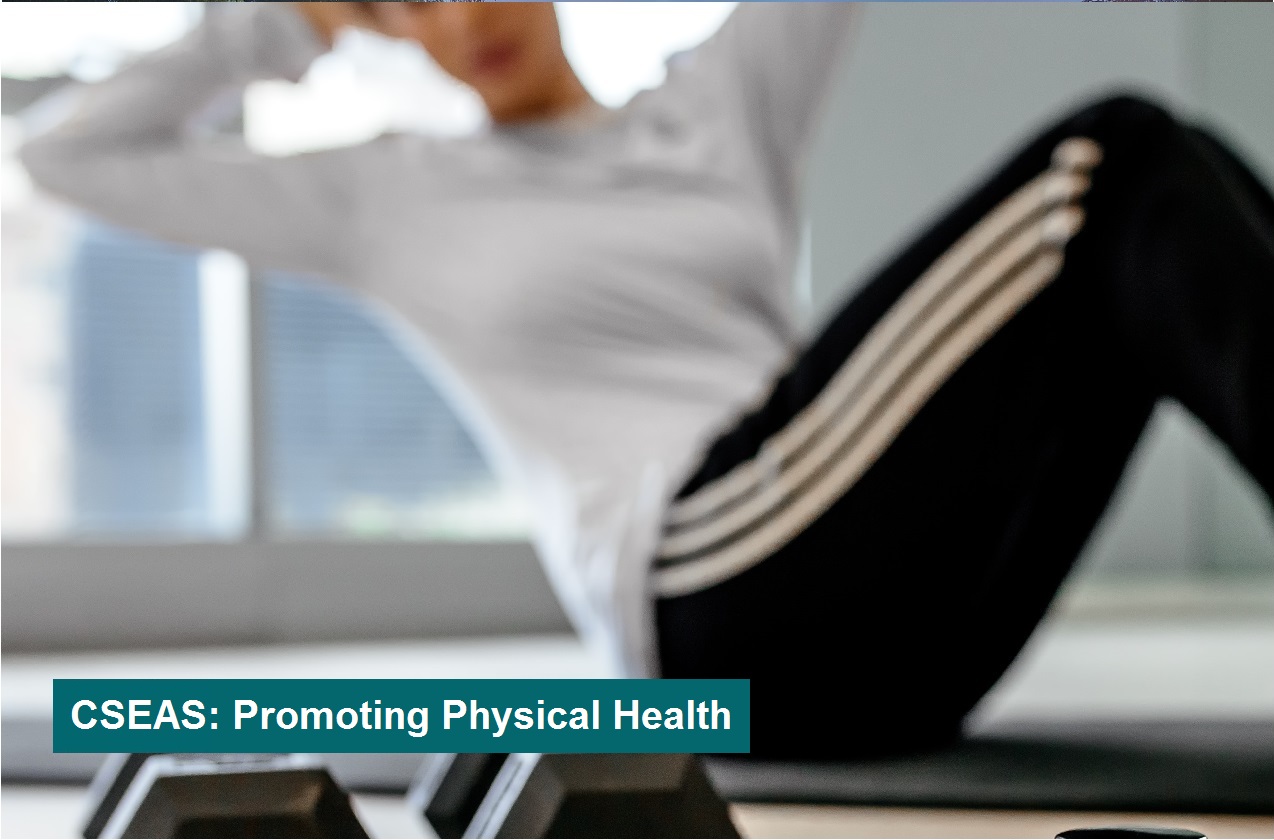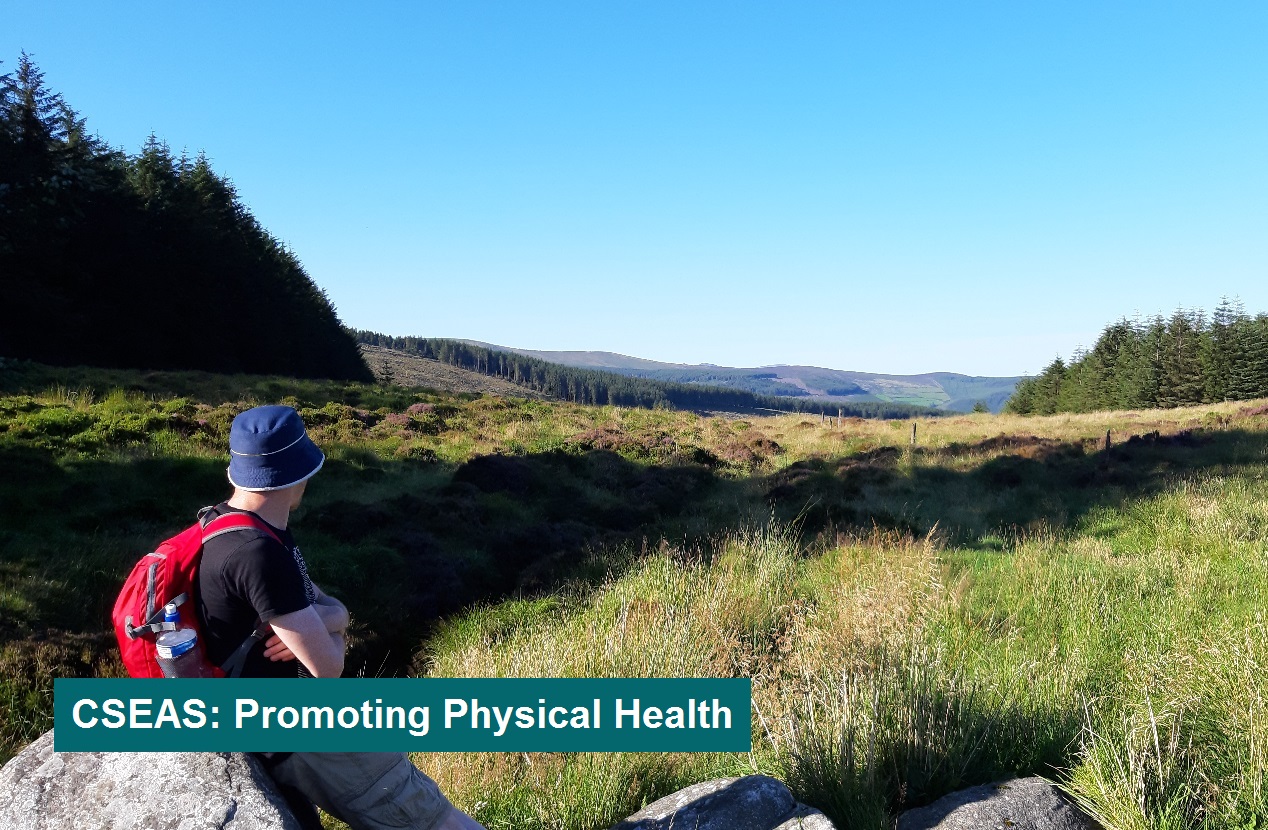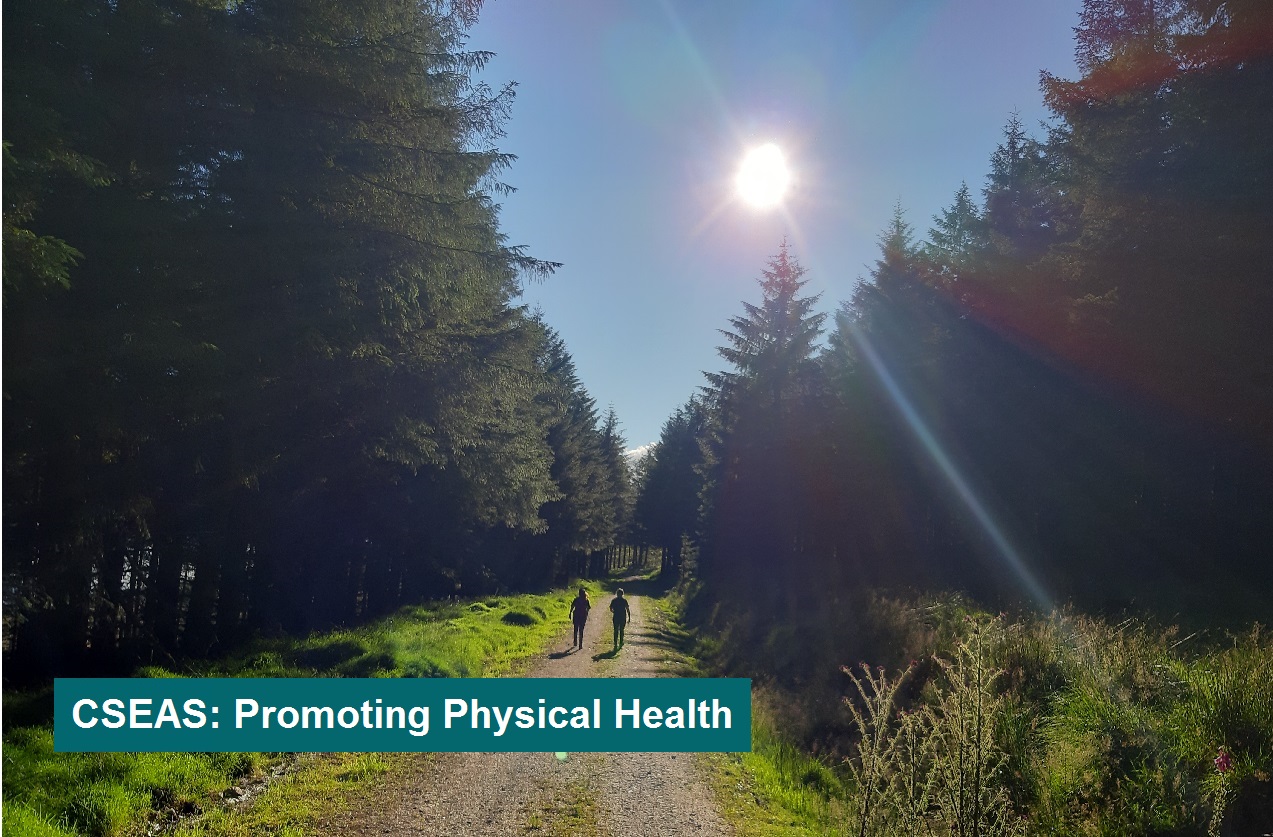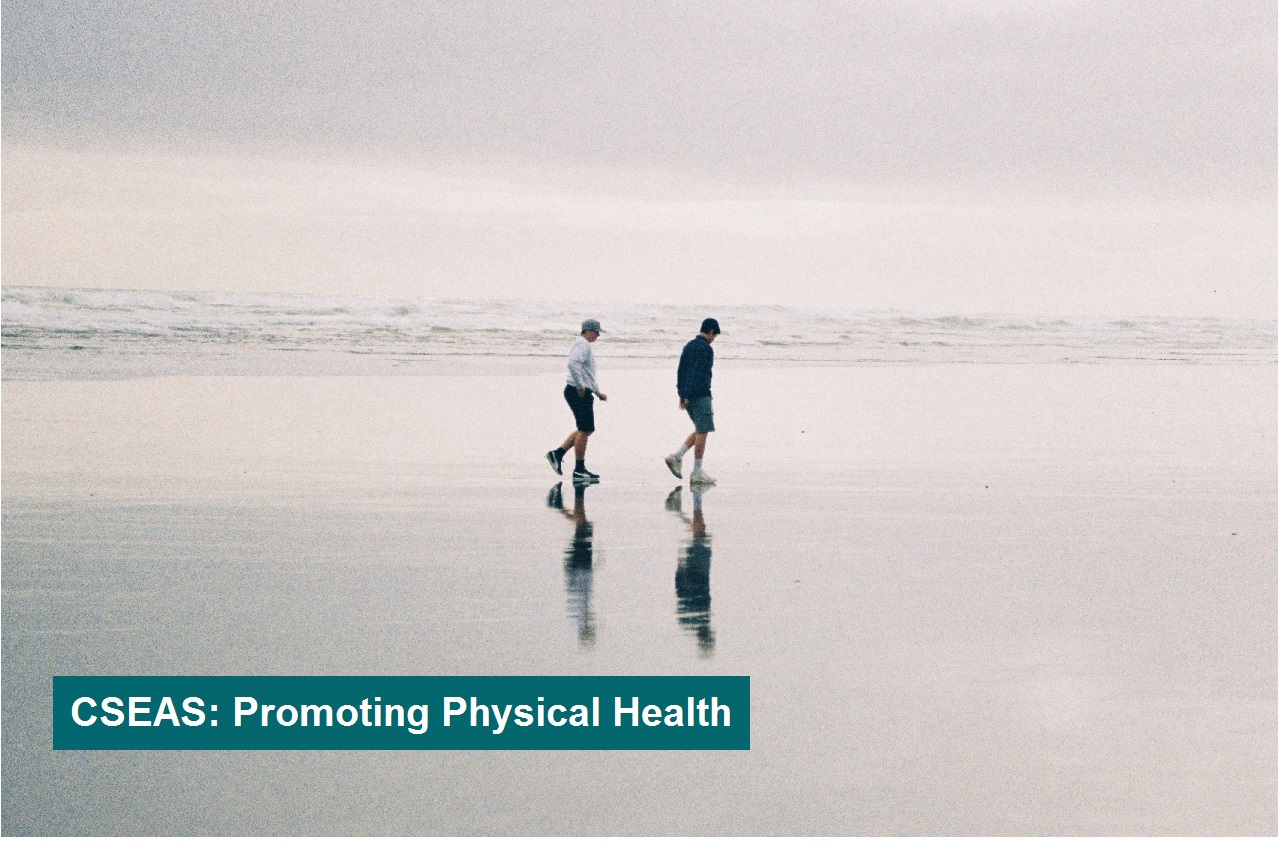Health and Wellbeing – Physical Exercise
Over the course of our lives we will face many challenges. Sometimes it is only when we are challenged by mental, physical or emotional stressors that we really appreciate the importance of our health and wellbeing. One of the most potent and effective tools we have for protecting our health and wellbeing is physical exercise. Unlike many of the other interventions, tools and therapies available to assist us, exercise can have a transformative effect on both mental and physical health.
‘We spend billions of dollars a year on research to create pills to improve health. Most of the pills target one area of health and have unwanted side effects. Meanwhile the most powerful intervention possible, which is exercise, goes comparatively unutilised.’ 1
 |
 |
 |
 |
 |
 |
 |
 |
 |
 |
 |
 |
Exercise has the power to invigorate us in the short-term with the gifts of energy, happiness and fitness. It can also help to protect us in the long-term against some serious common diseases and, perhaps one of the more surprising things is the role exercise plays in strengthening and preserving the functioning of the human brain. This information is for people who would like to know a little bit more about physical exercise and how exercise can help to boost our mental, physical and emotional health. Whether your fitness level is that of a beginner, you have established a good fitness base, or you are approaching the level of an elite athlete, hopefully this piece will help you take the next step in your fitness journey.
‘Exercise is the most transformative thing that you can do for your brain today. 2’
One of the more recently appreciated and wonderful aspects of physical exercise is its ability to boost our mental health and ability. It has been common knowledge for some time that being physically active is good for physical health, but there are also significant and maybe surprising mental health benefits to be gained. 3 These include:
• Increasing happiness by raising mood
• Buffering against depression
• Better memory
• Increased concentration and focus, quicker learning
• Delaying the onset of dementia
• Increased confidence and discipline
Our brains are the control centres within our human bodies. They are incredibly complex structures. They play the role of the computer within us, and they host our minds – the essence of who we are as personalities in the social world. Taking care of this organ is important and exercise can help us to do this in a significant way.
Exercise actually changes the structure and improves the function of the brain. People who train their bodies regularly can expect to experience a greater ability to maintain concentration and focus. Maybe more importantly than this is the fact that exercise protects against neurodegenerative diseases and cognitive decline.
Within the brain, the area at the front called the prefrontal cortex plays a key role in various functions: attention, focus, decision making, rational thought, language and personality. Its capability is boosted by exercise allowing for better concentration and focus. At the side of our brain, within the temporal lobes, is a structure called the hippocampus which helps us to create and recall long-term memory. Engaging in regular exercise activates the production of new brain cells within the hippocampus that increase the volume of the hippocampus, improving long-term memory in the process. This more robust hippocampus helps to delay the onset of dementia as this is the particular area of the brain targeted by the disease.
Exercise also increases happiness and lowers depression in participants – and the impact is immediate. Most people will experience a significant lift in mood and energy on completing a session of exercise in which they have raised their heart rate and have broken out in a sweat. Through the production of serotonin, dopamine, adrenaline and endorphins, physical exercise triggers chemical reactions that lessen pain, increase positive mood and counteract stress. People who engage in regular exercise experience an increased feeling of wellbeing and less symptoms of depression. In this way, exercise can be used as part of a strategy to increase levels of happiness, manage mood and, fight depression.
Exercise is invigorating and, during challenging times, it can give us a real boost to help increase our energy levels, health and positivity. There is a solid association between physical exercise and health outcomes. Sedentary lifestyle is linked with negative health outcomes and many serious illnesses 4. On the other hand, regular physical exercise is a great way to sustain muscular and cardiorespiratory health, as well as bone density, energy levels and weight control – helping to reduce the risk of many serious diseases. Exercise has a role to play in each of the following areas:
• Prevention of cardiovascular disease, type 2 diabetes and certain cancers 5
• Rehabilitation after stroke and heart failure
• Reversal of type 2 diabetes
• Building lung capacity
• Maintaining and building bone and muscle strength, reducing the risk of falls and accidents
• Adding to both length and quality of life
• Controlling weight
• In conjunction with diet, reducing body fat including dangerous visceral fat which surrounds the organs
• Reducing inflammation in the body, promoting healthy skin and healing – aerobic exercise delivers a boost of oxygenated and nutrient rich blood to the skin which improves the health of your skin and assists in the healing of wounds

Some people may believe that they are not young enough to achieve benefits from exercise, but exercise really can be of benefit to everyone – whatever the age or level of fitness. It has been shown that even 90 year-olds can see gains in strength and power with the correct exercise programme 6 therefore, we can all take measures to improve fitness and health.
If life expectancy continues to increase, it prompts us to try to be as fit and healthy as possible for as long as possible, so that our health span mirrors our life span. Moderate exercise may actually slow the ageing process at cellular level, protecting our bodies against degenerative aspects of aging.
Good sleep habits provide us with the freshness and energy for activity. Regular training of your body can assist you in achieving a more regular sleep pattern and in getting a better quality sleep. Be careful not to exercise too close to bedtime unless it is a gentle walk – moderate or intense exercise may boost energy levels.
The best answer to this question is the one that you like most. It can depend on many factors but, if you enjoy a particular kind of workout you are more likely to return to it again and again. This is so important in terms of reaping the long-term rewards of fitness. Many workouts can be found online. Here are some suggestions for things you can do at home:
• Stretching
• Walking or running on the spot
• Body weight exercises like press ups, lunges, crunches or squats
• Aerobic exercises like star jumps
• Floor exercises, yoga, Pilates
• Weight training
There are also a wide range of exercise programmes available from gyms, personal trainers and online. Remember, the best exercise is the one you enjoy as you are more likely to stick with it.
HIIT (High Intensity Interval Training) is simply performing an exercise at a high intensity – up to maximum effort – for periods of time separated by periods of rest or lower intensity exercise. For individuals who are relatively fit, this might be 60 seconds of flat out effort on an exercise bike or in a run, followed by 30 seconds rest, repeated 5 times. While high intensity exercise may not be for all, interval training can still be done by anyone and some of the health benefits can still be achieved. The idea is to elevate the heart rate during the exertion, even if you need to rest thereafter. Depending on your ability, it may be just a few steps followed by a rest, done repeatedly.
Those who are willing and able to perform HIIT can achieve the same results as those who engage in steady state cardio exercises like jogging but, in a fraction of the time. 7 If you have an exercise bike, a bicycle, a pair of running shoes or can do some indoor exercises, you have all you need to do some HIIT training. While HIIT training promises results from shorter workouts, remember that any amount of time spent exercising is better than none.
Try gardening, vacuuming, sweeping or mopping, cleaning out a wardrobe or cleaning windows. Do everything you do with more energy and vigour. Any movement that increases the heart rate somewhat will help.
Technological advances, changes in workplace behaviours and a generally more sedentary lifestyle means that people are now spending a lot more time sitting or being relatively inactive. Recommendations have been developed to give the public an idea of what the minimum requirement is for activity to achieve some of the health benefits.
The Health Service Executive (HSE) Healthy Ireland guidelines suggest at least 30 minutes of moderate exercise, five times a week, for all adults. This could be three 10 minute periods of activity – three 10 minute walks, for example. The World Health Organisation (WHO) supports the target of 150 minutes per week. It’s a good idea to schedule some exercise time into your day, and to set goals. Don’t aim too high but build up your levels of activity and exertion. Recommendations from the WHO are as follows:
• Adults aged 18–64 should do at least 150 minutes of moderate-intensity aerobic physical activity throughout the week or do at least 75 minutes of vigorous-intensity aerobic physical activity throughout the week or an equivalent combination of moderate and vigorous intensity activity
• Aerobic activity should be performed in bouts of at least 10 minutes duration
• For additional health benefits, adults should increase their moderate-intensity aerobic physical activity to 300 minutes per week, or engage in 150 minutes of vigorous-intensity aerobic physical activity per week, or an equivalent combination of moderate and vigorous intensity activity
• Muscle-strengthening activities should be done involving major muscle groups on 2 or more days a week
‘“The majority of the mortality-related benefits” from exercising are due to the first 30 minutes of exercise’ 8. The benefits seem to proportionately decrease as you perform more than this minimum of 30 minutes. Therefore, whatever exercise is performed should be one that individuals can manage for this minimum period of 30 minutes, where possible.
Some of us like to exercise with a partner so that there is an opportunity for a chat and, to support one another. It might be fun to involve children where appropriate or exercise with family members. The social element of exercise can be recreated at home through video links, online classes etc. Just don’t become too dependent on another’s presence as, if they can’t make it, you still want to ensure that you get your workout in.
It needs to be acknowledged that not everybody is a fan of exercise. Even those who love exercise and recognise its benefits have periods where they may lack motivation and participation in physical activity. Here we will discuss some of the reasons why people may not engage in regular training and hopefully, try to address some of the more common issues preventing people from exercising.
Present day lifestyles – Our early forager and farming human ancestors may have had athletic abilities well beyond our own, with better stamina plus superior dexterity and agility. 9 If we consider the sedentary office worker today we can easily imagine that this lifestyle is far less conducive to physical fitness. It is likely that most of us have the capacity for an increased amount of daily exercise and that reaching towards this level may be necessary to achieve optimum health. 10
Many aspects of contemporary living are designed to remove every possibility of physical exertion. This poses a challenge as exercise and physical fitness have an important role to play in the prevention (and treatment) of many common illnesses. There may also be a lag in the mainstream discourse in recognising exactly how important exercise is in both mental and physical health. 11
Drive/boredom – Unlike with food, drink, shelter, sleep and oxygen, physical exercise is not necessary in the immediate short term for human survival – there is no drive to exercise. Furthermore, many people simply do not find exercise, at least the most common types, mentally stimulating or enjoyable. 12 The key to tackling boredom is to find a way of exercising that suits who you are and what you want – whether that means a social element or not, a team or individual sport, indoor or outdoor etc.
Time – For some people the concept of physical fitness is not very time efficient, particularly in busy contemporary societies. Some may be put off taking up exercise by the belief that is takes long periods of exercise, plus trips to the gym, pool or track, for months or years in order to reach a better standard of fitness. Achieving time-efficient exercise may be done by exercising in blocks of 10 minutes at a time, three times a day. As mentioned earlier, for those who are able and willing to perform HIIT, this is a great way to get in a strenuous workout in a lesser timeframe.
Effort – There is no doubt that effort is required to gain the full benefits of exercise. However, the amount of exertion is often overestimated. We often feel great after making the effort to go for that walk or jog. On top of this, our bodies adapt when we exercise and so, over time, our perception of effort decreases for the same exercise as we do it more frequently – it gets easier. What might feel challenging in week 1 should feel less so in week 3.
Cost – It is possible to spend a little or a lot on physical exercise. At the upper end of the scale, there are very expensive options for gyms, fitness equipment, personal trainers and clothing. However, there are a lot of simple exercises that can be done for free at home and there are many free options online. Walking and running can be done relatively inexpensively in a pair of comfortable walking shoes or running shoes. Getting in shape doesn’t have to cost an arm and a leg!
Energy/tiredness – Depending on health and fitness levels we may have different levels of energy available to us. It is normal to feel tired if we are working hard, parenting and caring. However, we can boost energy levels in a few ways including by being active. Sleep and exercise have a symbiotic relationship, meaning that good sleep habits increase your energy for exercise, while exercise helps you sleep better. Good hydration and nutrition will also boost energy levels.
Physical limitations – We are all confined by physical limitations of some kind and it is important to know these. Do seek medical advice or professional training if necessary. People with physical disabilities should aim to be as active as their disability allows; and to achieve 30 minutes exercise, five times a week, if possible. 13
Intimidation/beliefs – There may be an element of intimidation or self-consciousness about attending a gym or pool, in the belief that ‘I am not good enough’ and that everybody else there will be super-fit and judging me harshly. We are all capable of making excuses like ‘exercise is for the fitter and younger’. Thankfully these beliefs are generally misplaced but, taking a look at several potential fitness facilities and having a chat with staff, may provide reassurance about what might be the most suitable training environment for personal progress. It can be advantageous to find a location where like-minded people train.
Lacking motivation/bargaining with self – ‘I’ll start exercising tomorrow…’ We can all lack motivation and make excuses at times. The reality is that if we wait for motivation in order to create change in our lives it may never come. It was traditionally thought that we need to build up motivation in order to take on a new challenge. Sometimes it is by taking action that momentum and motivation build.
Habits – One of the best ways of creating change in our lives is to incorporate the desired new behaviour into our lives so that it becomes second nature, like brushing our teeth and showering. Habits are formed by repetition. If we can persist with a new exercise regimen for as little as a few weeks, it can become habitual.
In order to make a new behaviour a habit, we must normally keep it up for a period of at least three weeks – the period of time depends on the person. After the habit is established, we start to look forward to the new behaviour and miss it when we don’t do it. At this point we are not relying on motivation alone to keep going.
Physical exercise can have an amazing impact on your mind. In the short-term it can lift your mood and increase your personal confidence. In the long-term, the mental benefits derived from exercise include strengthening our mental capabilities and buffering against depression, cognitive degeneration and Alzheimer’s disease. The physical benefits include better performance, higher energy levels, boosting your immune system and decreasing the likelihood of a range of serious illnesses.
Exercise really is for everyone – we can all reap the health rewards of being a little bit fitter. Exercise can be a great way to boost your energy levels, maintain positivity, stay healthy and, to have fun. In these challenging times remember that we need to keep both a healthy body and a healthy mind as best we can. Physical exercise can help with both. Keep safe, keep active.
– The Civil Service Employee Assistance Service (CSEAS) actively promotes Health & Wellbeing
– Global average lifespan doubled in the 20th Century
– As of 2019, life expectancy in Ireland is 84 years for women and 80.4 years for men, according to the Department of Health
– The World Health Organisation estimated in 2018 that only 19% of children, 12% of adolescents, and 33% of adults and older adults in Ireland were getting sufficient exercise.
– The cycle to work scheme is one initiative aimed at addressing physical health for workers in Ireland
– Many public bodies now promote health and wellbeing
– Get Ireland Active! The National Physical Activity Plan for Ireland was launched in 2016
– National Sports Policy launched in 2019 by the Department of Transport, Tourism & Sport
– Go For Life is the national programme aimed at increasing the level of participation in sport and physical exercise for older people
– 62% of people overweight or obese in 2017 (Healthy Ireland Survey 2017)
– 37% of people eat 5 or more fruit and veg a day (Healthy Ireland Survey 2018
List of sources consulted
– Bassuk, S., Church, T., & Manson, J. (2013). WHY EXERCISE WORKS MAGIC. Scientific American, 309(2), 74-79. Retrieved 02/06/20, from www.jstor.org/stable/26017898
– Bubbs, M. (2017). ‘HIIT Training, Performance Exercise and Longevity’. Dr. Bubbs Performance Podcast, Retrieved 25/04/2017, from https://www.youtube.com/watch?v=3xAUzbPRMYI
– Department of Health (2019). Health in Ireland: Key Trends 2019. Retrieved from https://static.rasset.ie/documents/news/2019/12/health-in-ireland-report.pdf
– Department of Health and Children, Health Service Executive (2009). Retrived from https://www.hse.ie/eng/about/who/healthwellbeing/our-priority-programmes/heal/heal-docs/the-national-guidelines-on-physical-activity-for-ireland.pdf
– Department of Transport, Tourism & Sport (2019). National Sports Policy 2018-2027. Retrieved from https://www.gov.ie/en/publication/aaa7d9-national-sports-policy-2018-2027/
– Get Ireland Active! National Physical Activity Plan for Ireland. (2016). Retrieved from https://assets.gov.ie/7563/23f51643fd1d4ad7abf529e58c8d8041.pdf 01/04/2020
– Gibala, M. (2017). The One Minute Workout: Science shows a way to get fit that’s smarter, faster, shorter. London: Vermillion
Harari, Y. N. (2011). Sapiens: a brief history of humankind. London: Vintage
– Health Service Executive (2018). Little Things Campaign. Retrieved from https://www2.hse.ie/services/campaigns/littlethings/posters.html
– Healthy Ireland & Department of Health (2019 ). Be Well. Retrieved 01/04/20, from https://www.gov.ie/en/publication/06de8b-be-well/#physical-activity-guidelines
– Hewitt, J. (2017). How to grow old like an athlete. World Economic Forum. Retrieved from https://www.weforum.org/agenda/2017/02/healthspan-vs-lifespan/
– Kamerow, D. (2015). Why don’t people exercise, even a little? BMJ: British Medical Journal, 350. Retrieved 29/05/20, from www.jstor.org/stable/26520804
– Lam, V. (2018) Power of Fitness. Retrieved 16/09/20, from https://www.ted.com/talks/vincent_lam_power_of_fitness
– MacAuley, D., Bauman, A., & Frémont, P. (2015). Exercise: Not a miracle cure, just good medicine. BMJ: British Medical Journal, 350. Retrieved 28/05/20, from www.jstor.org/stable/26520372
– Oaklander, M., & Jones, H. (2016). 7 Surprising Benefits of Exercise. Retrieved 19/09/20, from https://time.com/4474874/exercise-fitness-workouts/
– Revenue.ie (2020). Cycle to Work Scheme. Retrieved 19/09/20, from https://www.revenue.ie/en/jobs-and-pensions/taxation-of-employer-benefits/cycle-to-work-scheme.aspx
– Reynolds, G. (2011). What is the single best exercise? Retrieved 19/09/20, from https://www.nytimes.com/2011/04/17/magazine/mag-17exercise-t.html
– Robson, S. (2013). Physical Fitness Constructs, Measures, and Outcomes. In Physical Fitness and Resilience: A Review of Relevant Constructs, Measures, and Links to Well-Being (pp. 5-16). Retrieved 16/07/20, from www.jstor.org/stable/10.7249/j.ctt5hhswd.8
– Suzuki, W. (2017). The Brain Changing Benefits of Exercise. Retrieved 07/09/20, from https://www.ted.com/talks/wendy_suzuki_the_brain_changing_benefits_of_exercise
– Whipple, D. (1997). Stone Age Aerobics. The Los Angeles Times. Retrieved 28/05/20, from https://www.latimes.com/archives/la-xpm-1997-01-23-me-21305-story.html
– World Economic Forum (2017). How to grow old like an athlete. Retrieved 16/09/20, from https://www.weforum.org/agenda/2017/02/healthspan-vs-lifespan/
– World Health Organisation (2018). Physical Fact Sheet Ireland. Retrieved from http://www.euro.who.int/en/countries/ireland/data-and-statistics/ireland
World Health Organisation (No date). Retrieved from https://www.who.int/dietphysicalactivity/factsheet_adults/en/
Footnotes
1 = Bubbs, (2017)
2 = Suzuki, (2017)
3 = MacAuley, et al., (2015)
4 = Robson, (2013)
5 = MacAuley, et al., (2015); Kamerow, (2015) ); Gibala, (2017) p.93
6 = Hewitt, (2017)
7 = Gibala, (2017)
8 = Reynolds, (2011)
9 = Harari, (2011)
10 = Whipple, (1997)
11 = MacAuley, et al., (2015)
12 = Kamerow, (2015)
13 = Department of Health and Children, HSE (2009)



